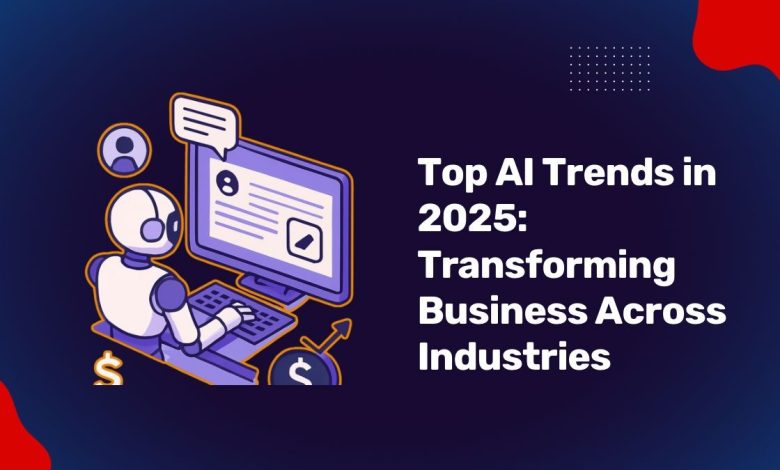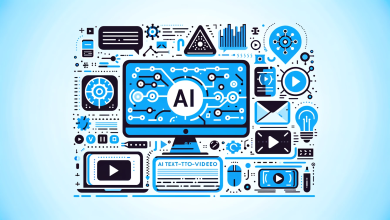
Artificial intelligence is no longer just a buzzword. It is becoming a foundation for how modern businesses run. In 2025, one of the most important discussions for leaders is understanding Traditional AI vs Generative AI. Knowing how they differ and where they fit can help organizations use the right tools to grow and innovate.
This article explains the key differences between these two types of AI, where each performs best, and what leaders should consider when making tech decisions this year.
What Is Traditional AI?
Traditional AI is designed to follow clear rules. It focuses on specific tasks, like detecting fraud, recommending products, or recognizing speech. These systems are trained on labeled data and learn to make decisions based on that input. They are usually good at tasks with clear patterns and outcomes.
A common example is a system that filters spam emails. It does not create new content, but it sorts messages based on what it has already seen.
In short, traditional AI helps businesses automate repetitive tasks, improve accuracy, and save time by analyzing structured data. It works best in areas with clear rules and defined goals.
What Is Generative AI?
Generative AI takes things further. Instead of just following rules, it creates new content, ideas, or responses. These systems can generate text, images, code, or even music. Tools like GPT and other language models fall into this category.
This kind of AI learns from large volumes of data. It does not just memorize; it understands patterns and uses them to respond creatively. Generative AI can assist in writing, designing, planning, and solving problems that require original thinking.
It enables real-time interaction, helps teams brainstorm, and adapts to user behavior. That is why it is becoming popular in content marketing, education, and customer support.
Traditional AI vs Generative AI: Key Differences
Understanding the Traditional AI vs Generative AI difference is important when choosing the right solution for your business.
| Feature | Traditional AI | Generative AI |
| Goal | Solve specific tasks | Create new content or ideas |
| Data type | Structured, labeled | Unstructured, large-scale |
| Output | Classifications, predictions | Text, images, videos |
| Flexibility | Low | High |
| Learning style | Supervised | Unsupervised or self-taught |
| Common use case | Fraud detection, automation | Content creation, planning |
In most cases, companies use both types. The key is knowing when each is most useful.
How Are Businesses Using These Technologies?
Businesses are blending traditional models with generative tools to stay ahead. For example, a finance firm might use traditional AI to flag risky transactions and generative tools to write alerts for customers.
One exciting trend is the rise of ai agent use cases. These agents, often built with generative models, can handle support tickets, offer coaching, and even guide internal teams. They respond based on context, which helps teams work faster and with more insight.
In healthcare, doctors using ai combine traditional systems that flag symptoms with generative assistants that summarize patient history. This cuts down the time spent reviewing data and improves accuracy in diagnosis.
In education, personalized learning ai creates lesson plans tailored to a student’s pace. It does not just test knowledge; it guides learners through a journey. Traditional tools can grade papers, while generative tools provide detailed feedback and suggest topics to review.
In the insurance sector, ai for insurance is transforming how policies are managed. Traditional systems handle claims and risk scoring, while generative models write client communications or help agents offer better responses.
What Should Businesses Look for in 2025?
As AI tools evolve, the lines between traditional AI and generative AI continue to blur. Still, it is important to pick the right technology for each task.
Here are some factors to consider:
- Goal Clarity What problem are you solving? If it’s a process with clear steps, traditional AI might be the best choice. If you need creativity or communication, go with generative tools.
- Data Availability Do you have clean, labeled data? Traditional models require this. Generative models, on the other hand, can learn from broader sources. But both need privacy and ethical considerations.
- Speed and Cost Traditional AI models are faster and cheaper to deploy when used for focused tasks. Generative models, while powerful, need more computing and tuning. Businesses should balance performance with the budget.
- Compliance and Accuracy In regulated industries like health or finance, explainable models are essential. Traditional systems are more predictable. Generative tools must be monitored to avoid mistakes.
- Integration Potential Can the AI fit into your current systems? Some tools work out of the box, while others need customization. Choose what scales with your growth.
Real-World Tips for Teams
If you are just starting with AI in 2025, start small. Identify one workflow that can benefit from automation or creativity. Try using both approaches side by side.
For example, a customer service team could use traditional tools to track response time and generative ones to draft replies. Compare the results.
Encourage feedback from users. Both customers and employees can help spot gaps and suggest improvements.
Train your team to understand the basics of Traditional AI vs Generative AI. When everyone understands how these tools work, adoption improves, and results come faster.
Keep reviewing outcomes. AI is not a one-time setup. It needs updates, checks, and training. But if done well, it offers lasting impact.
The Road Ahead
AI is changing the way businesses work. In 2025, the shift is not about choosing one type over the other. It is about balance.
Traditional AI vs Generative AI is not a competition. They serve different needs. One ensures stability. The other brings innovation.
Leaders who learn to combine these tools smartly will build better products, serve customers faster, and create value in ways that were not possible before.
Want help building your AI roadmap? Whether it’s task automation or smart assistants, choosing the right mix of AI is the first step toward future-ready success.
H4: Conclusion
In 2025, every business leader has to ask one simple question — Am I still relying on old tools, or is it time to try something new?
Some tasks need structure and clear steps — that’s where traditional tools work best. But when you need creativity, interaction, or something more human-like, newer tools shine.
It’s not about picking one over the other. What really matters is knowing when to use what.
Start small. Test what works for you. Understand how these tools fit your team and your goals. That’s how real growth happens — not through hype, but through smart choices.
FAQs
- What is the main difference between Traditional AI and Generative AI?
Traditional AI follows predefined rules to perform specific tasks, like detecting fraud or sorting emails. Generative AI, on the other hand, creates new content (text, images, etc.) by learning from patterns in large datasets. - Which one is better for businesses?
It depends on the task. Traditional AI works best for repetitive, rule-based tasks like automation and data analysis. Generative AI is ideal for creative tasks like content creation, personalized recommendations, and brainstorming. - Can both types of AI be used together?
Yes, many businesses use both types of AI. For example, traditional AI may handle data analysis, while generative AI creates content based on that data, offering a complete solution.




